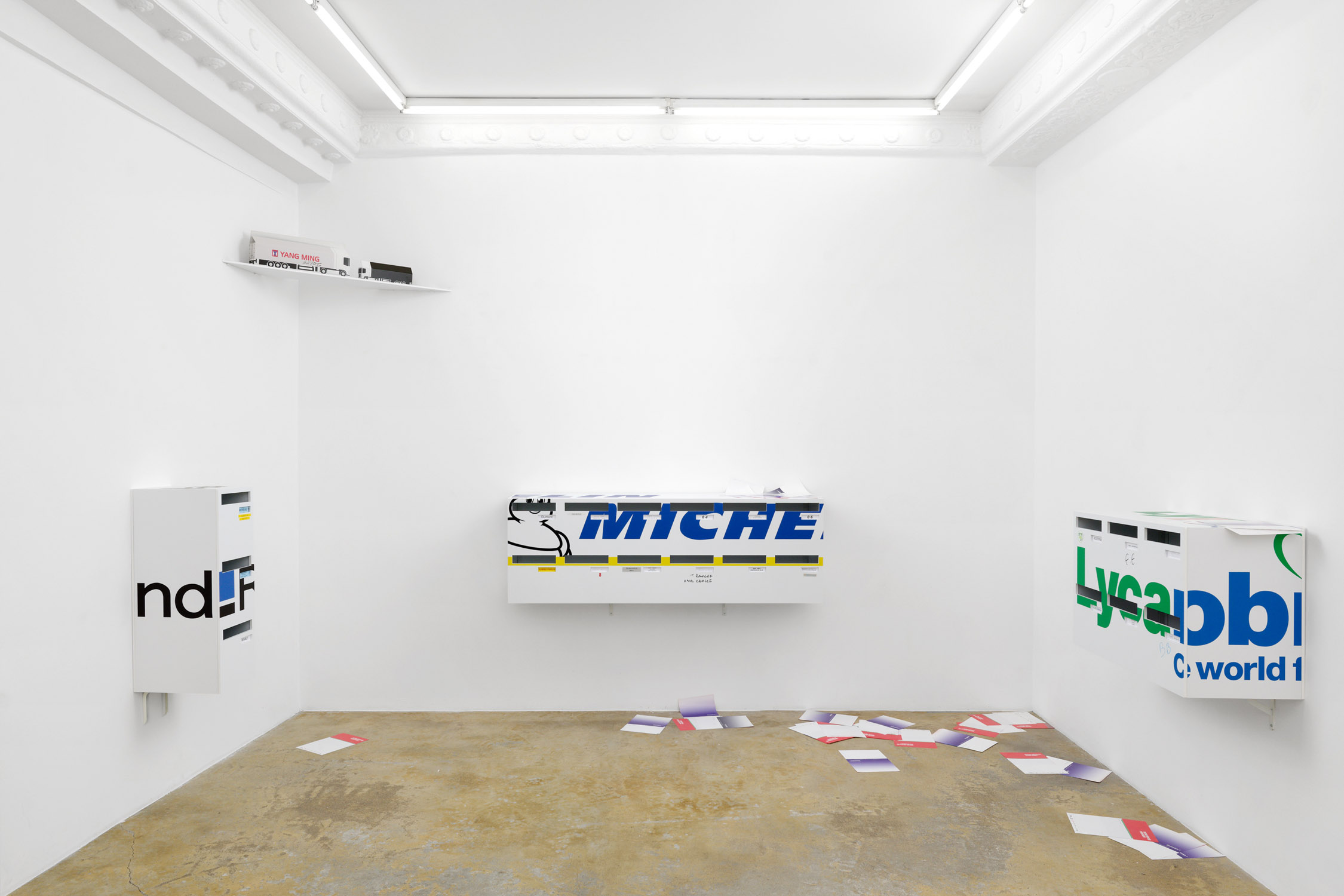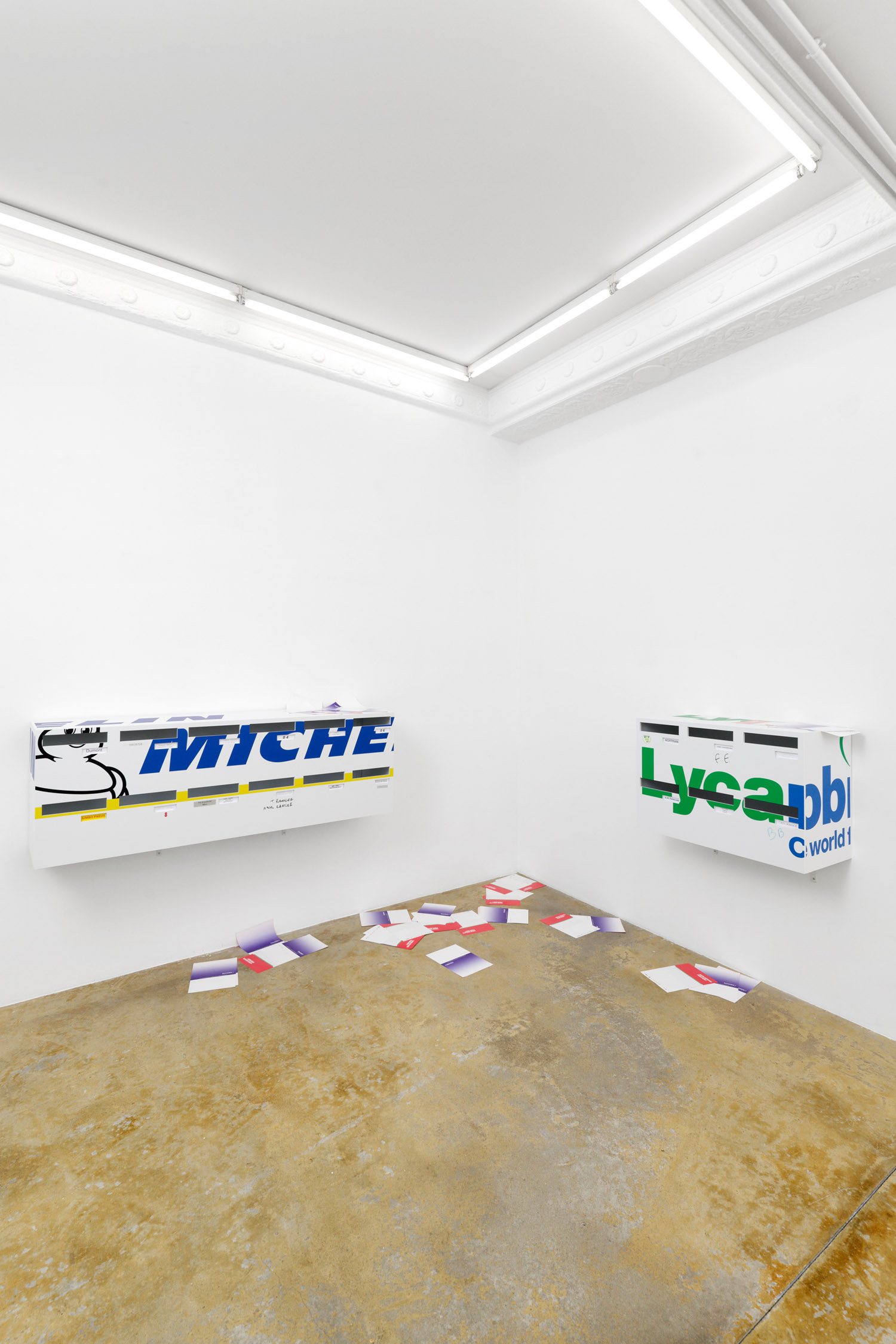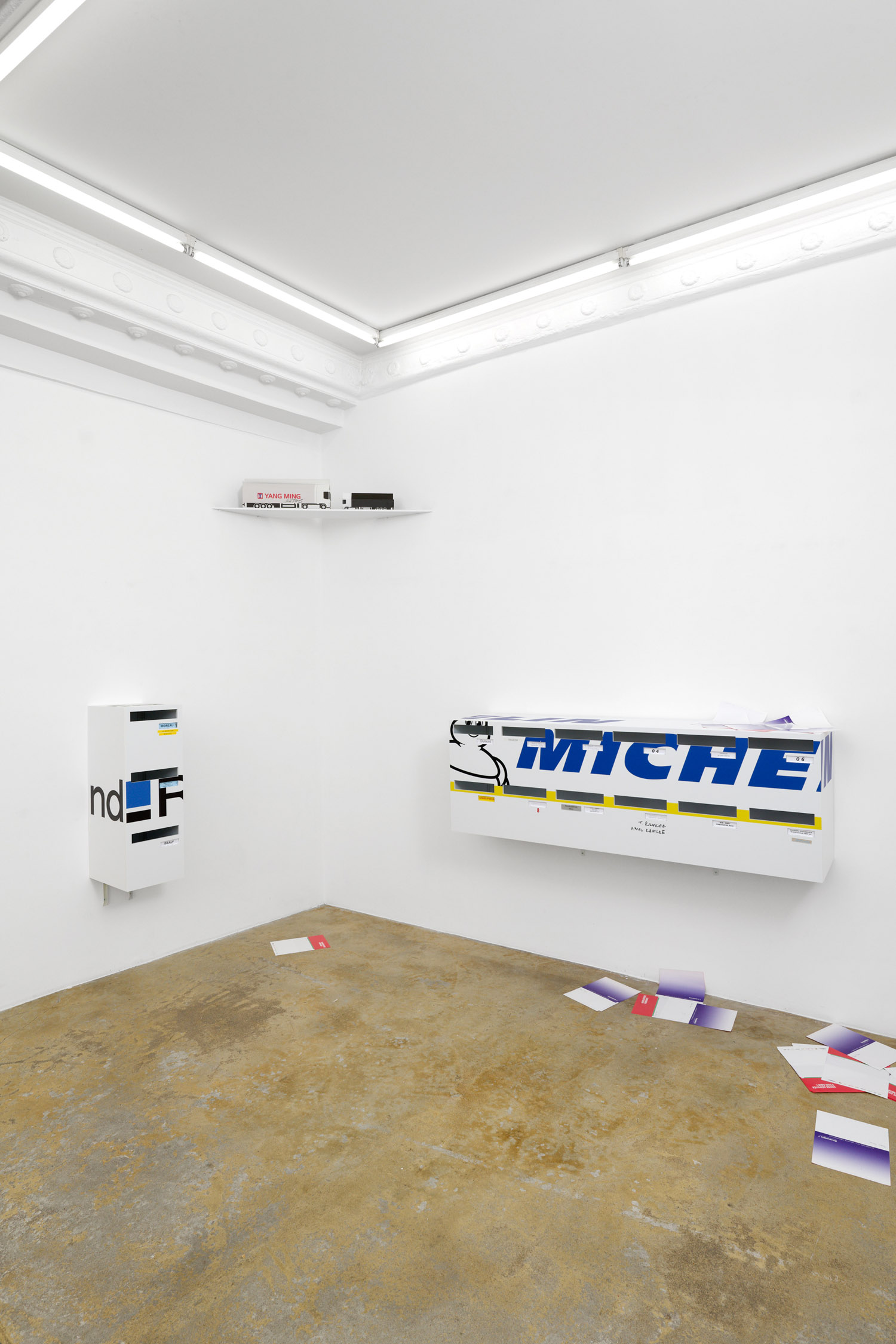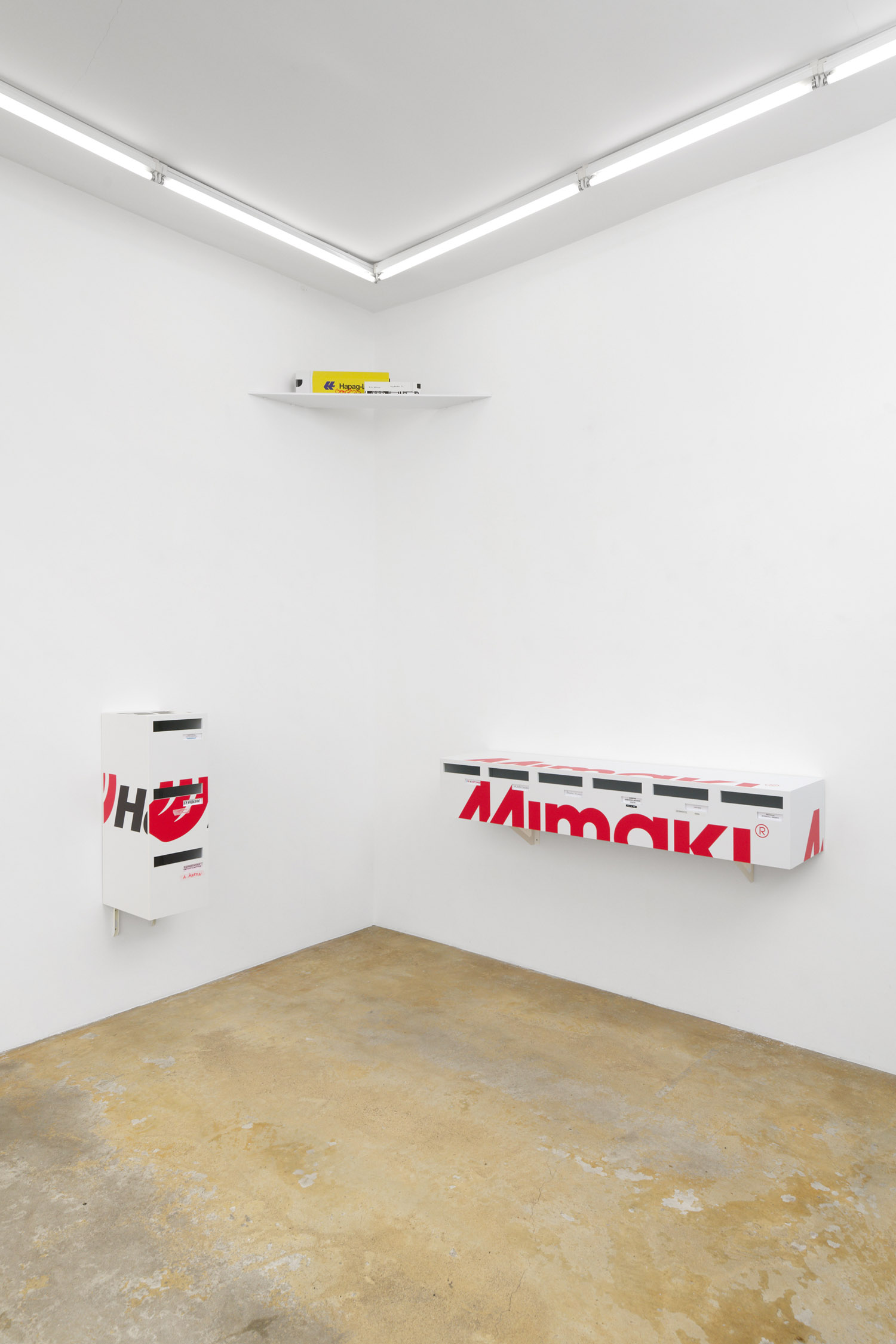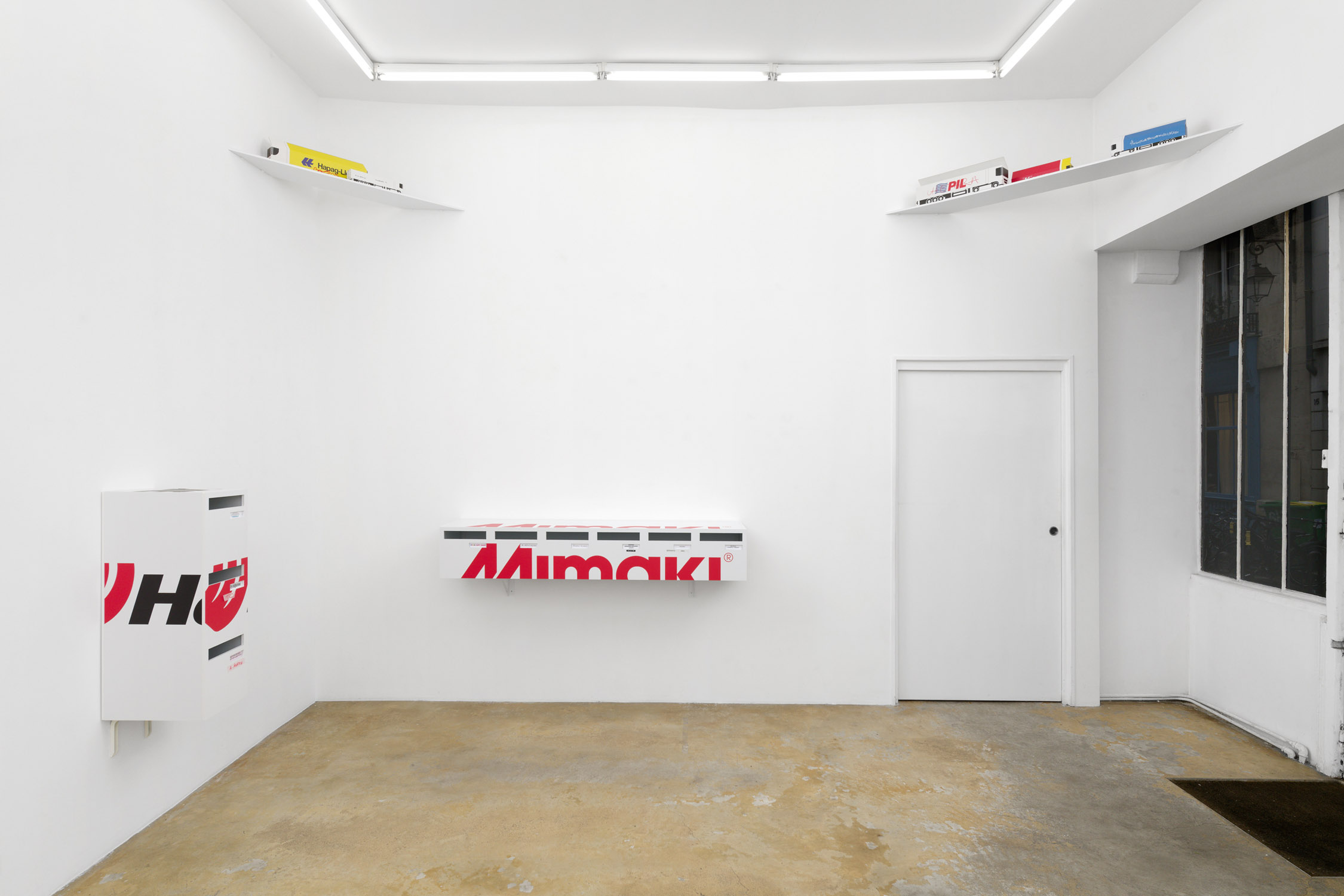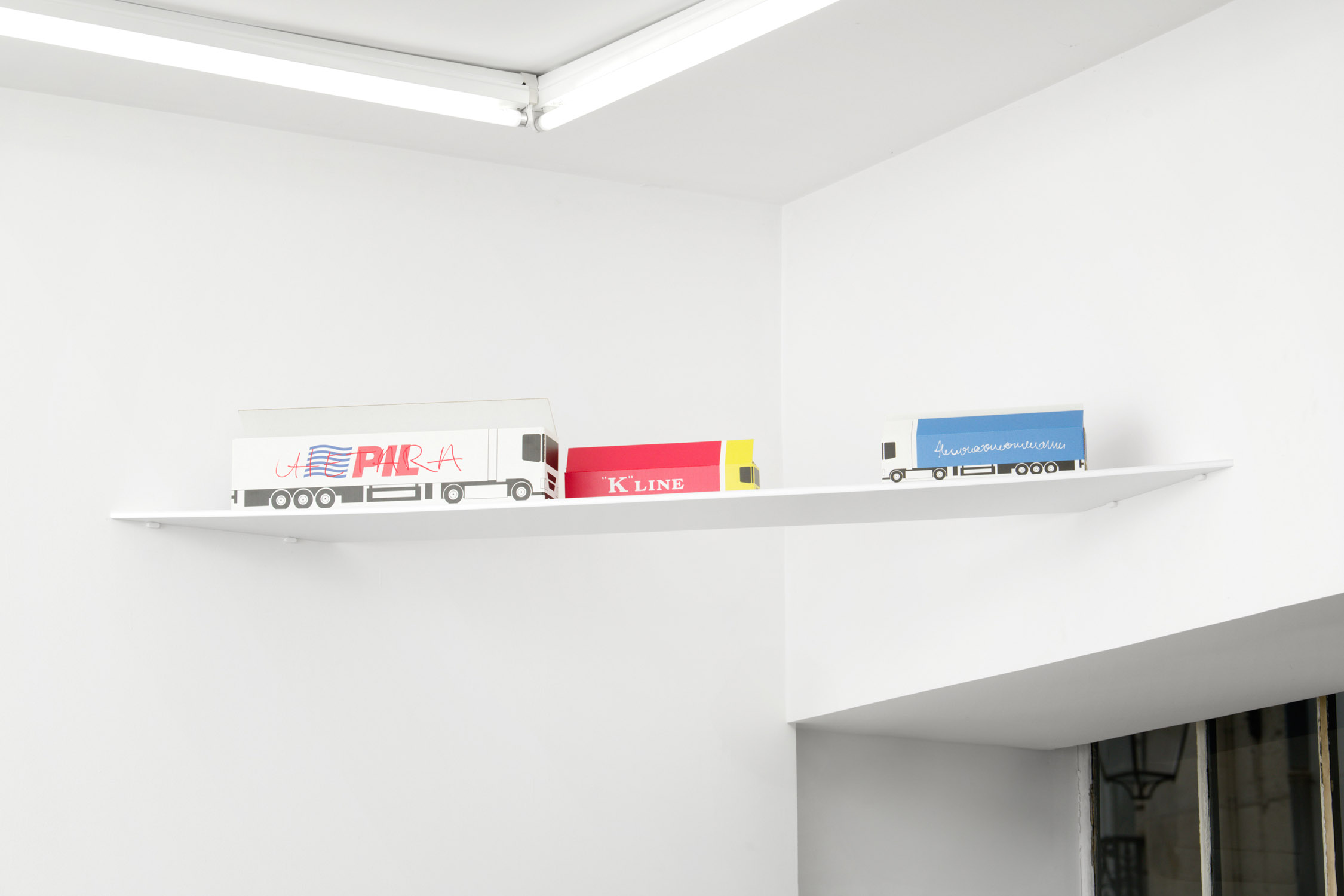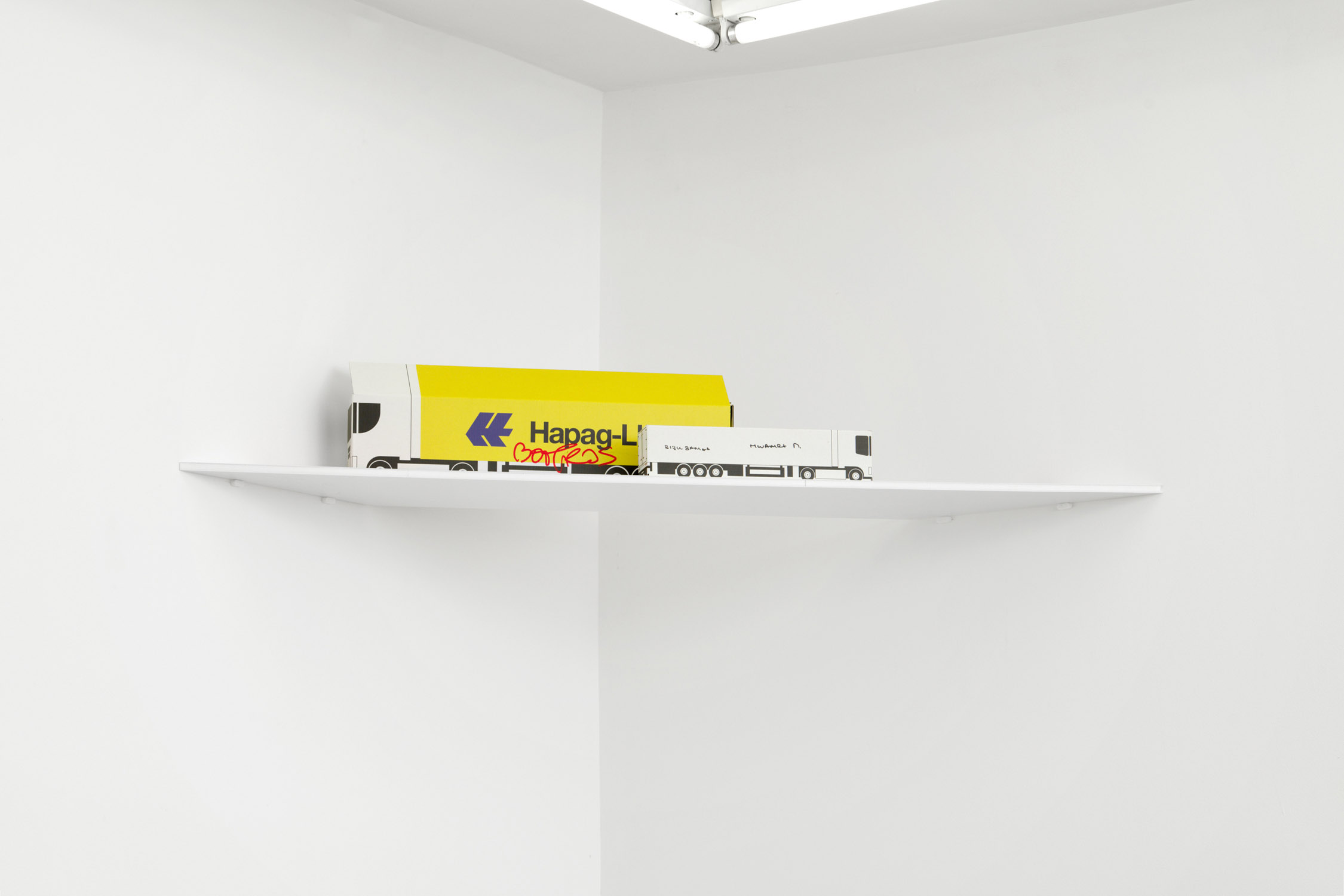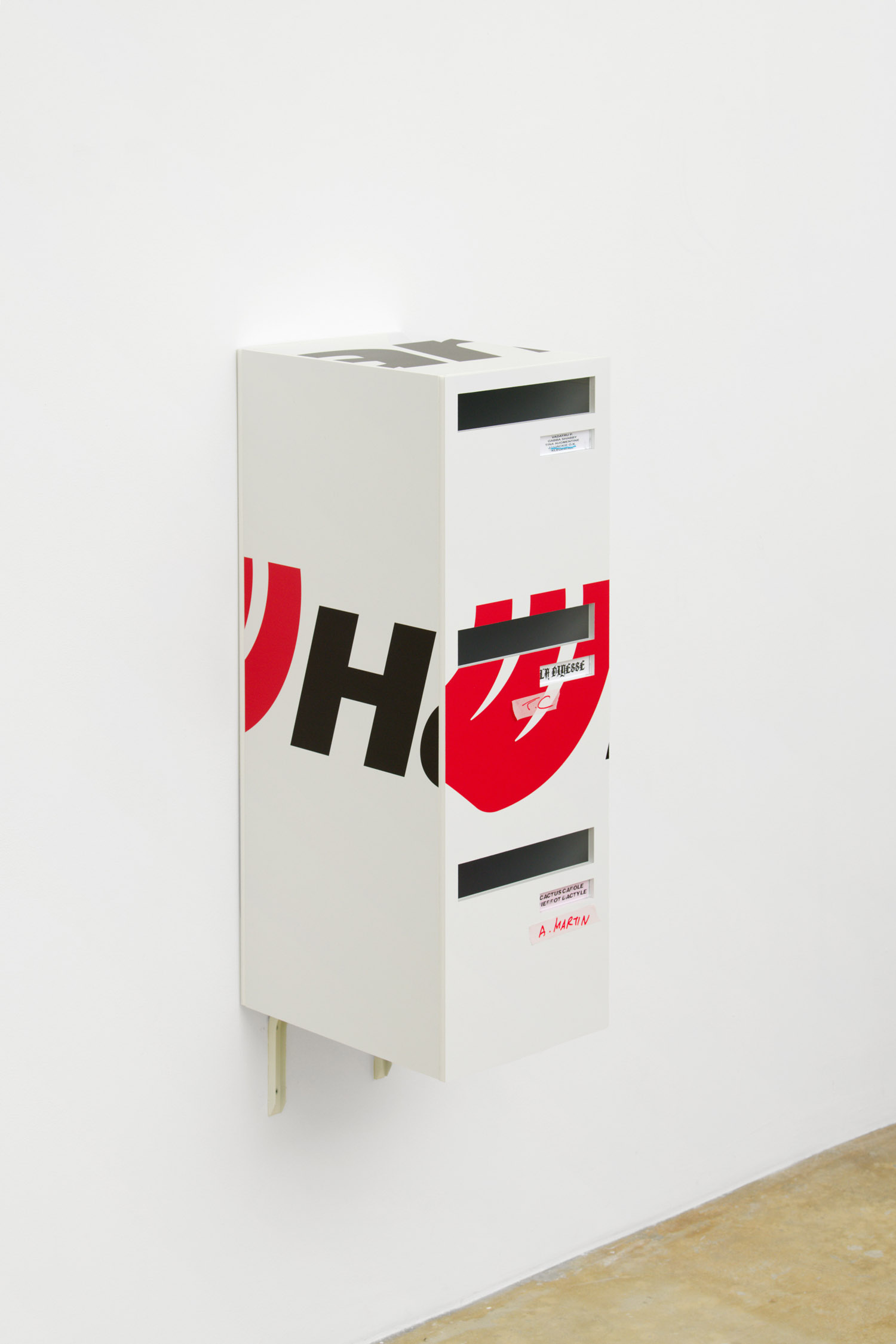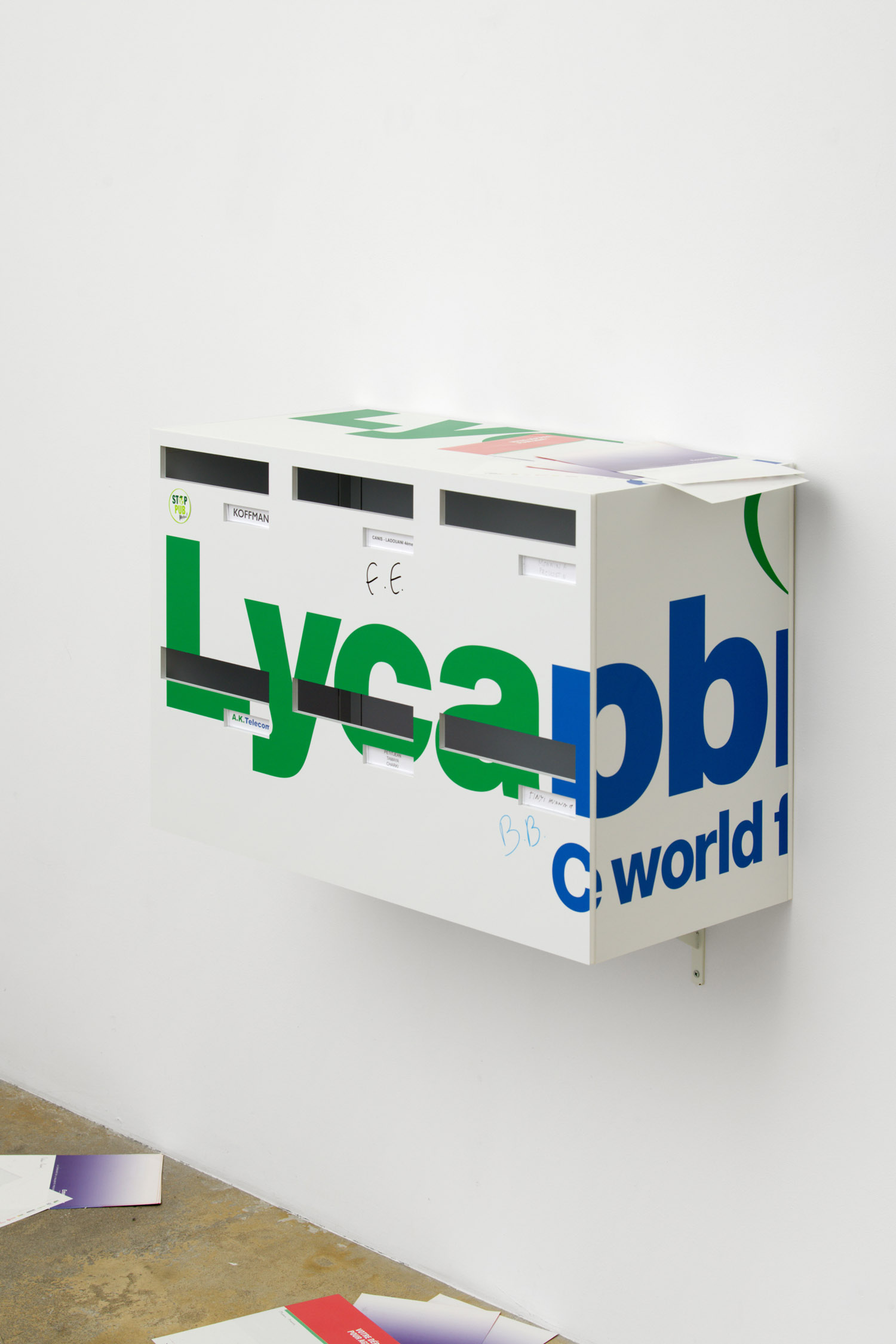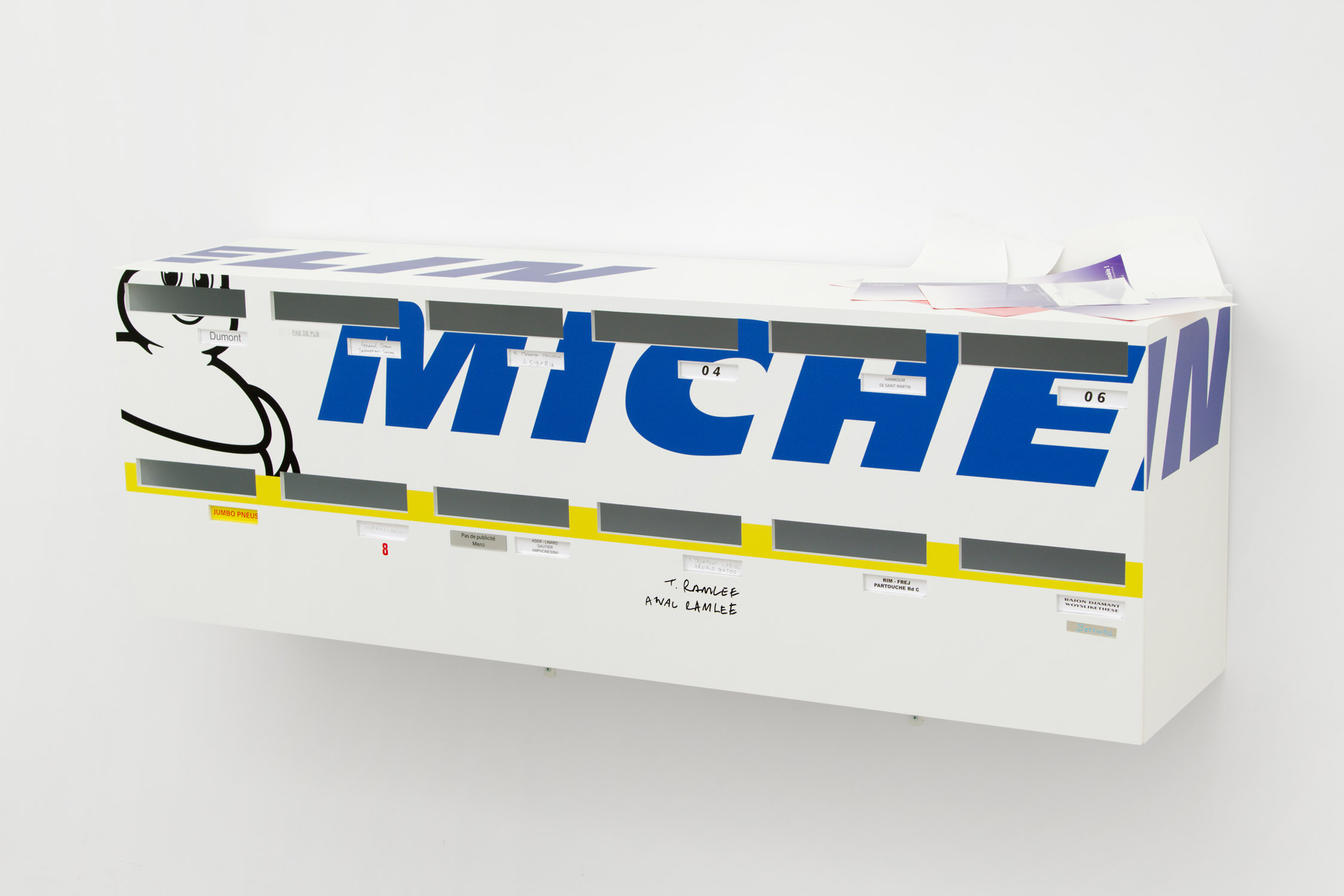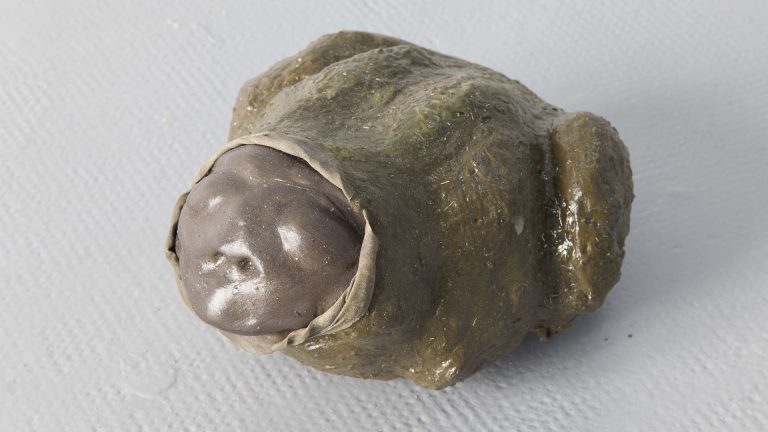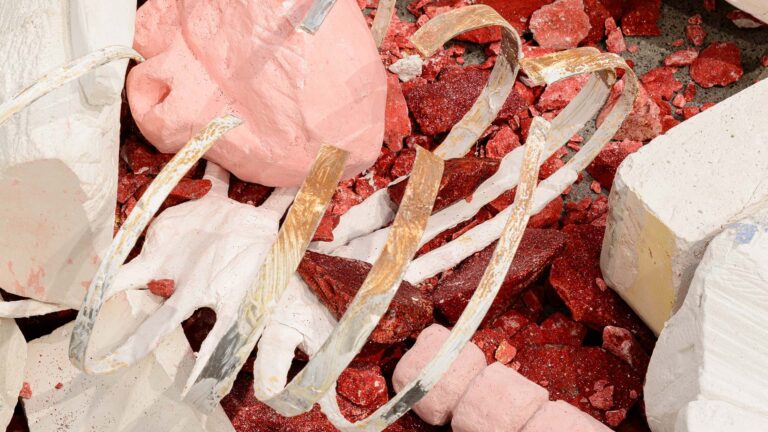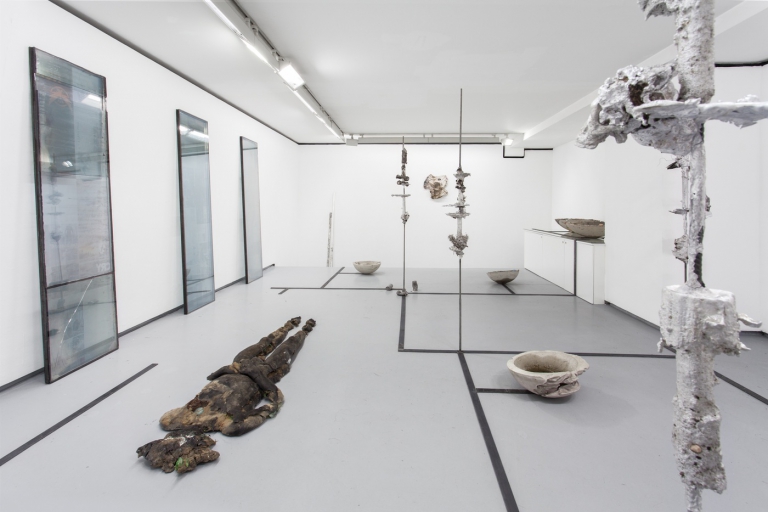Artist: Francesc Ruiz
Exhibition title: LIKE A MOBILE MODEL
Venue: Galerie Florence Loewy, Paris, France
Date: February 3 – March 30, 2023
Photography: images courtesy of the artist and Galerie Florence Loewy, Paris
Amongst the numerous boxes created by artists throughout history, letterboxes have, since at least the 1920s (1), become a category in their own right. Some artists have taken up the object itself through installation and sculpture, while others have focused on its contents; at Florence Loewy, Francesc Ruiz works through both of these aspects.
In France, the form of the letterbox is defined by strict criteria that are codified by a decree issued by the Ministry of the Environment and the State Secretary for Post and Telecommunications, which was published in the government’s official register on 29th June 1979: “Residential buildings must be equipped with a number of letterboxes at least equal to the number of individual residences in the building. These must correspond to the standards NF D 27-404 (interior letterboxes) or NF D 27-405 (exterior letterboxes) as they apply at the moment at which planning permission for the construction is granted.” (2) The standards referenced in this decree are defined by France’s standardization board, AFNOR (Association française de normalisation), and set out specifications for every aspect of the letterbox, from its dimensions to the rigidity of the materials used in its construction – as far as I can tell, in any case, since access to these norms requires the payment of a fee and is indeed a market in its own right.
This characteristically French standardization is of particular interest for Ruiz, whose installations are shaped by a keen attention to context. The newspaper stands and comic book stores that he has created are always adapted to their environment, their layout and the content of the publications varying according to whether they are installed in Venice (Edicola Mundo, 2015) or Cairo (Cairo Newsstand, 2010). An installation in Vauxhall, one of London’s gay neighbourhoods, featured yaoi manga (Gasworks Yaoi, 2010). In Paris, the five letterboxes installed in the gallery recall those that can be seen in neighbouring buildings, though their skin of promotional material sets them apart entirely. Continuing his research into what Benedict Anderson has called “print capitalism” (3), Ruiz appropriates here the digital printing technologies and PVC materials that are the favoured means of multinational companies (the Lycamobile mobile phone network, Michelin tyres) for ensuring their visibility in public spaces. These inexpensive techniques allow advertisers to cover large surfaces in an aggressive visual strategy that is further extended through their use of bright colours: recently, in an exhibition at CA2M, Ruiz created an installation featuring a life-size model of three superimposed streets, each defined by its own chromatic environment (Three Streets, Three Colours, 2020). In an extension of this idea, the letterboxes covered in promotional material here become an isolated sign of the urban milieu, decked out in a new, global vernacular style: from Ruiz’s hometown of Barcelona to Paris, advertising is the same the world over. With their scale and presence ever increasing online and off, promotional images are the expression of another regime of diffusion: they constitute so much visual noise, a cacophony that echoes out in all directions. Precious little separates this unbridled production, which seems to recognize its immediate redundancy, its imminent disposal, and its inevitable destruction from the political leaflets that stuff letterboxes with every election cycle: things we receive unsolicited and throw away unread.
Visual and informational pollution are always apprehended by Ruiz by way of the materiality of their mediums and their conditions of circulation. In this way, he links what Roman Cieslewicz the “pollution of the eye” to our ongoing and all-too-real ecological disaster: both the letterboxes and the scaled-down models of trucks placed in the gallery’s corners evoke this reality more or less directly. Ruiz is at pains, however, to foreground the affective dimension of these objects, the difference that they can contain. From the names of drivers or the soft toys which sometimes adorn the trucks’ cabins to the names written, engraved or simply taped on the letterboxes, he looks to details which can offer a roundabout way of accessing the personal micronarratives of the lives lived on the fringes of the circuits of global logistics.
-Valentin Gleyze
1. Boîtes, ARC2/Musée d’art moderne de la Ville de Paris, Paris, 16th December 1976-30th January 1977; Maison de la Culture de Rennes, 3rd February-2nd March 1977 (curators: Françoise Chatel and Suzanne Pagé).
2. Journal officiel de la République française, n° 160, 12th July 1979, p. 1719.
3. Benedict Anderson, Imagined Communities: Reflections on the Origin and Spread of Nationalism, London, Verso, 1983.
